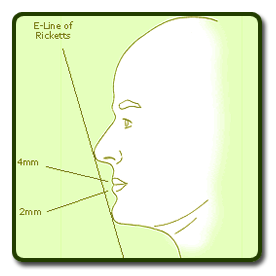|
| Rhinoplasty :: Aesthetic Beauty |
|
Aesthetic Beauty
|
Facial plastic surgeons are trained to recognize the skeletal proportions that determine the attractiveness. For this reason, your surgeon will analyze your bone structure and facial features carefully before discussing any possible improvements, perhaps using aesthetic principles similar to these:
|
 |
The rule of thirds:
Certain dimensions and ratios create harmony in the facial features.
|
|
A key principle of facial proportion is based on the "golden proportion," a concept that has long been recognized in architecture and art. It states that a well proportioned face will be divided into equal thirds when horizontal lines are drawn through the forehead hairline, the brow, the base of the nose, and the edge of the chin.
|
 |
The rule of fifths:
The width of the base of the nose is approximately equal to the distance between the eyes.
|
A proportionate face may be divided vertically into fifths, each approximately the width of one eye. Aesthetic balance is considered ideal when the facial features fall within these parameters.
Although small differences contribute to individuality, an attractive face exhibits a high degree of bilateral symmetry, that is similarity between one side of the face and the other.
|
 |
The aesthetic concepts of beauty demand that certain curves, contours, dimensions and ratios are fulfilled in order to create harmony and produce an attractive face.
|
|
It was once widely believe that standards of beauty were largely cultural. New research suggests, however, that our views of what is attractive are remarkably consistent, regardless of race, nationality, or age. Although the preference for individuality features may vary among cultures, the proportions of facial attractiveness are generally the same for most ethnic groups.
Aesthetic principles are helpful, but they are only guidelines. People today are appreciating individual uniqueness, and they know that true beauty starts from within.
|
 |
The ideal chin projection as described by Leonardo da Vinci. The vertical facial plane should meet the lower lip and the chin. The Frankfurt Horizontal is a plane connecting the superior border of the external auditory meatus to the infaorbital rim.
|
|
Facial plastic surgeons are trained to look at the whole face, not just individual features. That's why patients who consult a surgeon seeking one procedure are sometimes surprised to hear the doctor suggest something different. By studying the dimensions of the face and relationships of the features to one another, the facial plastic surgeon can determine which surgical procedures are needed to create a more harmonious appearance.
|
 |
In the aesthetically ideal patient, both the upper and lower lips should be slightly behind the E-line of Ricketts, with the lower lip closer.
|
|







